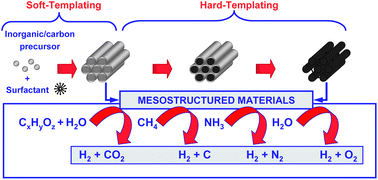Advances in the design of ordered mesoporous materials for low-carbon catalytic hydrogen production
Abstract
It is believed that hydrogen will play a relevant role as an energy vector in the near future, but in order to fulfil these expectations the development of economically feasible routes with limited CO2 emissions is required. In this respect, catalysis is crucial in most of the possible processes for hydrogen generation and, accordingly, improvement in the catalyst properties should have a significant impact on the efficiency of the production. In particular, ordered mesoporous materials of different chemical composition (oxides and non-oxides) possess a high potential for improving a variety of catalytic routes for the production of low-carbon hydrogen. The activity of this type of catalyst is frequently enhanced due to a combination of high surface area, low diffusion restrictions, and high dispersion of the supported active phases. In this work, we review the latest advances in the use of these mesostructured catalysts in the most relevant routes for hydrogen generation with reduced greenhouse emissions: steam reforming of biomass derived feedstocks (biogas, ethanol, and glycerol), methane and ammonia decomposition and photocatalytic reduction using sacrificial electron donors.


 Please wait while we load your content...
Please wait while we load your content...